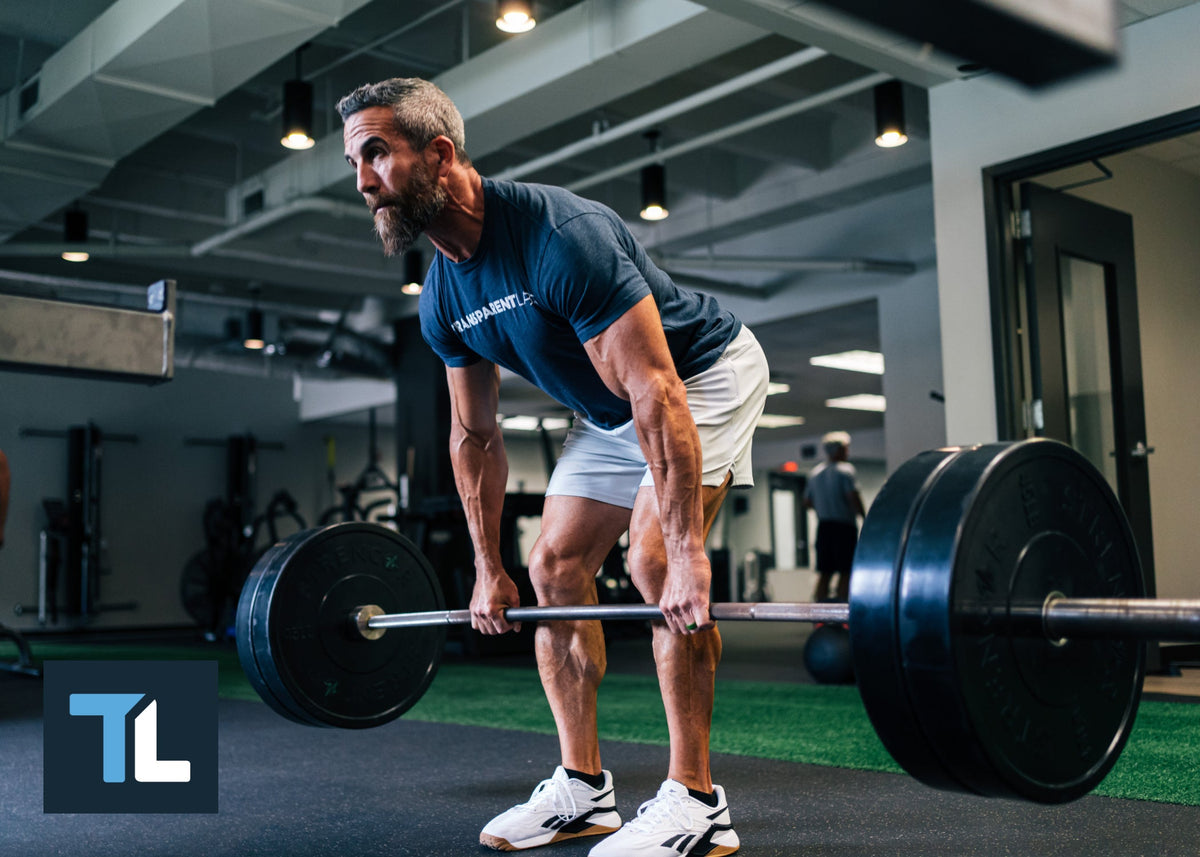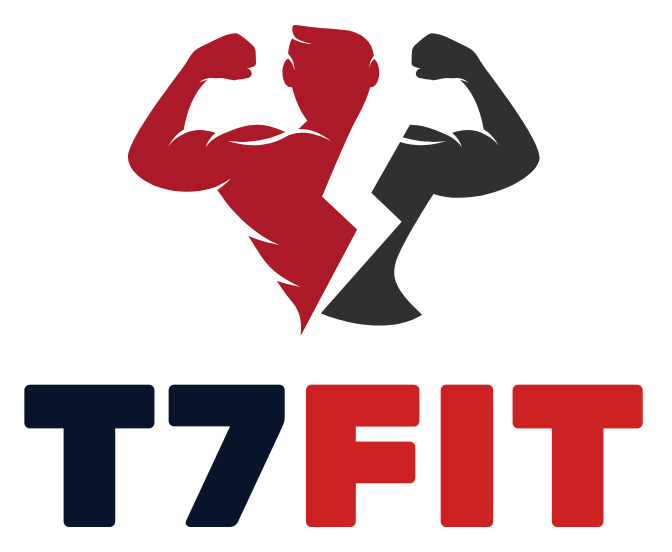To avoid back pain while lifting weights, maintain proper form and gradually increase weight. Engage your core and ensure a neutral spine position throughout your exercises.
Lifting weights is an excellent way to build strength and muscle, but it’s crucial to perform exercises correctly to prevent injury, particularly to your back. Maintaining a strong core and practicing proper lifting techniques are vital steps in safeguarding your back during workouts.
A neutral spine and engaged core muscles support your back, distributing the weight and reducing strain. Beginners should start with lighter weights, focusing on their form before progressively adding more weight. This approach not only spares your back from pain but also enhances overall lifting efficiency. By prioritizing technique over heavy lifting in the initial stages, you cultivate a foundation that supports more significant gains with minimal risk of back injury.
Introduction To Weightlifting And Back Pain
Lifting weights is a great way to build strength and endurance. Yet, many find themselves sidestepping workouts due to back pain. Back pain can stop a weightlifting journey before it even starts. Understanding how to lift weights safely is key to avoiding this common issue.
Common Causes Of Back Pain In Weightlifting
Back pain in the gym often comes from mistakes that can be avoided. Let’s explore some major causes:
- Improper lifting techniques – Using the wrong form can strain the back.
- Overloading – Too much weight can overwhelm the back muscles.
- Lack of warm-up – Skipping a warm-up can lead to muscle injuries.
- Repetitive stress – Doing the same lifts can overwork back muscles.
- Weak core stability – A weak core increases the risk of back injuries.
The Importance Of Proper Form
Proper form is the golden rule in weightlifting. It ensures that the right muscles work, reducing the strain on the back. Here are crucial tips for maintaining proper form:
- Keep the spine neutral. Don’t arch too much or hunch over.
- Engage your core. This provides support to your lower back.
- Move smoothly. Avoid jerky or quick movements that can cause harm.
- Use your legs. Always lift with your legs, not your back.
- Stay balanced. Distribute the weight evenly to avoid leaning and twisting.
Analyzing Your Current Routine
Embarking on a weightlifting journey can be the start of a healthier, stronger you. Yet, it’s crucial to pause and examine your training habits. This helps evade back pain, a common weightlifter’s challenge. Delve into your current routine to ensure it supports your back health.
Identifying Risky Exercises
Some workouts can strain the back if done incorrectly. Here’s what to look for:
- Improper Form: Exercises like deadlifts or squats need care.
- Overloading: Lifting too much can damage the spine.
- Twisting Motions: They can put stress on the back.
Assessing Your Equipment Choice
The right gear can prevent back pain. Reflect on these aspects:
| Equipment Type | Features to Consider |
|---|---|
| Weight Belts: | These add support during heavy lifts. |
| Shoes: | Good traction and support are key. |
| Mats: | Thick mats cushion impacts. |
Assess each item’s condition. Worn-out equipment won’t help your back.
Mastering Safe Lifting Techniques
Lifting weights can build strength and stamina. But, wrong moves can cause back pain. Proper techniques keep the spine happy. Want to lift without the ache? Follow these steps for pain-free workouts.
The Deadlift: Ensuring Spinal Alignment
The deadlift is a power move. It works many muscles. But it can strain the back if done wrong.
Stand right. Feet should be hip-width apart.
Keep the bar close. It should almost touch your shins.
Bend at the hips and knees. Keep your chest up and out.
Lift with your legs. Your back stays straight.
Squeeze those glutes. Stand tall at the top of the move.
Lower the bar by bending hips first, then knees.
Squats: Protecting The Lower Back
Squats are great for legs. But they can hurt your lower back.
- Stand tall. Feet should be shoulder-width apart.
- Keep your head up. Look straight ahead.
- Stick your butt out. Act like you’re sitting in a chair.
- Bend your knees. Do not let them go past your toes.
- Keep your back straight. No rounding or arching.
- Push through your heels. Return to standing.
:max_bytes(150000):strip_icc()/VWFIt-ways-to-improve-your-deadlift-technique-7558719-d0b5d9fca43c410281695b2f4ab8b1d3.jpg)
Credit: www.verywellfit.com
Incorporating Prehab And Rehab Exercises
Back pain during weightlifting isn’t inevitable. The key lies in the preparation of your body before hitting the weights and recovery after grueling sessions. Enter the prehab and rehab exercises: a weightlifter’s armor against injury. By engaging in proactive routines, lifters can fortify their backs. Let’s explore the exercises that bolster back health and enhance lifting performances.
Strengthening Core Stability
Core stability is crucial for a healthy back. Strong core muscles support your spine during weightlifting. Begin with exercises like planks and bird dogs. Aim for short sets with perfect form. Gradually increase difficulty, but maintain precision.
- Planks: Hold for 20 seconds, rest, and repeat
- Bird Dogs: Alternate sides, 10 reps each
- Dead Bugs: Keep the lower back pressed down, 10 reps
Consistency leads to improvements in lift performance and reduced injury risk.
Mobility Drills For Flexibility
Improved flexibility equates to a broader range of motion. Begin with dynamic stretches before weightlifting. End with static stretches post-lifting. This ensures muscles and joints stay limber.
- Dynamic stretches: Leg swings and arm circles
- Static stretches: Touch your toes and hold for 30 seconds
- Hip Flexor stretch: Lunge forward and hold for 30 seconds
Dedicate time to these stretches during each workout session. Watch as your flexibility helps prevent back strain.
Listening To Your Body
When it comes to weightlifting, tuning into the messages your body sends is crucial. Listening to Your Body isn’t just a phrase; it’s an essential strategy to avoid back pain. Let’s dive into how to differentiate between good pain and bad, and when your body is advising you to take a well-deserved rest.
Recognizing Pain Vs. Discomfort
Understanding the signals your body sends is key. ‘Good’ discomfort is often a sign of muscles working hard. It feels like a mild burn during exercise, fading quickly once you stop. Pain differs from discomfort as it can be sharp, persistent, or cause a feeling of weakness. This type of pain suggests your back might need attention. Adjust your form or decrease the weight if pain occurs.
When To Take A Break
Rest is essential in any workout routine. Signs you need a break include sharp pain, discomfort that persists beyond your workout, or any pain that worsens with exercise. Listen to these cues; they protect you from injury. Always allow adequate recovery time, especially if experiencing back pain. Here’s a quick guide:
- Sharp, shooting back pain: Stop immediately.
- Persistent soreness: Rest until soreness subsides.
- Minor discomfort: Consider lighter weights or better form.
Advanced Techniques And Alternative Exercises
We all want to stay strong and healthy. Lifting weights can help us do that. But, back pain can make lifting hard. Good news! There are smart ways to lift weights without hurting your back.
Exploring Lower-impact Options
Lifting heavy isn’t always better. Your back likes it when you’re kind to it. Lower-impact exercises keep your back feeling good. Here’s how:
- Bodyweight workouts: Use your own weight to get stronger. Try push-ups, pull-ups, and planks.
- Resistance bands: These stretchy bands add muscle work without heavy weights.
- Swimming: Water holds you up and takes pressure off your back. It’s a great way to build muscle.
Using Technology And Equipment For Safer Workout
Use smart gym tools to stay safe. They help you keep your back straight and strong. Check out these cool tools:
| Tool | How It Helps |
|---|---|
| Weightlifting belts | Supports your back when you lift. |
| Smartphone apps | Tracks your form and gives tips. |
| Machine weights | Controls your moves to avoid strain. |
Work smarter, not harder. Your back will thank you. Stay strong and pain-free!
Navigating The Recovery Process
Lifting weights can strengthen your body. But it can also cause back pain if not done right. If your back hurts after lifting weights, it’s time to focus on recovery. Healing properly means getting back to the gym faster. Apply these tips to take care of your back. Let’s dive into the best recovery routines and find a good doctor to help you.
Effective Post-workout Routines
After lifting weights, cool down properly. This will help your back recover. Follow these steps:
- Stretch gently: Do back-friendly stretches to ease tension.
- Use ice or heat: Apply an ice pack for 20 minutes. If several days pass, try heat instead.
- Rest your back: Give your back time to heal with good sleep and rest.
Consider light activities like walking or swimming. These can help without straining your back.
Choosing The Right Healthcare Professional
For back pain, find a trusted doctor who knows sports injuries. Here’s how:
| Type of Doctor | How They Help |
|---|---|
| Physiotherapist | Provides exercises to strengthen your back. |
| Chiropractor | Adjusts your spine for better alignment. |
| Osteopath | Offers hands-on care to ease pain. |
Choose a professional with good reviews and sports expertise.

Credit: www.transparentlabs.com
Continuous Learning And Adaptation
Lifting weights is an effective way to build muscle strength and endurance. However, without the right knowledge and techniques, you can easily end up with back pain. The key is in continuous learning and adaptation. Let’s dive into ways to lift weights safely and keep your back healthy.
Educating Yourself On Anatomy And Biomechanics
Understanding your body is crucial. Learn about muscles, bones, and joints to optimize your workouts.
- Muscle Function: Know which muscles you’re working. Aim for a balanced routine.
- Spine Health: Prioritize spinal alignment to avoid strain.
- Motion Range: Respect the natural movement of joints.
Books, online courses, and certified trainers can offer valuable insights. Remember, knowledge is power.
Staying Updated With Safe Practices
Fitness trends change. Stay informed with the latest research to protect your back.
- Frequent Training: Short, daily sessions prevent overloading your back.
- Proper Form: Keep your core engaged and lift with your legs, not your back.
- Rest and Recovery: Your muscles need time to heal and strengthen.
Check reputable fitness websites and consult professionals to enhance your weightlifting strategy.
:max_bytes(150000):strip_icc()/Lower-Back-Pain-After-Workout-GettyImages-1248214249-2000-70d30db05e864e73bce64b7e5829018a.jpg)
Credit: www.shape.com
Frequently Asked Questions For How Do I Lift Weights To Avoid Back Pain?
What Exercises Strengthen Back For Weightlifting?
Function-specific exercises like deadlifts and planks can significantly strengthen your back muscles, enhancing support for weightlifting. Incorporate them into your routine gradually, focusing on proper form to prevent injury.
How To Maintain Proper Form While Lifting?
Always keep a neutral spine, engage your core, and bend at the hips and knees, not your waist. Ensure your head is aligned with your spine, and lift using your legs, not your back.
Is Stretching Important For Lifting Weights?
Yes, stretching both before and after lifting weights is crucial. It improves flexibility, prepares muscles for the strain of lifting, and reduces the risk of back pain by relieving tension.
Can Lifting Weights Improve Back Pain?
When done correctly, lifting weights strengthens back muscles and can improve back pain. It’s vital to choose appropriate weights and prioritize form over quantity to avoid further injury.
Conclusion
Embracing proper weightlifting techniques is key to back pain prevention. Ensure you’re learning from credible sources and listen to your body’s signals. Regularly incorporating these strategies can lead to stronger muscles and a healthier back. Stay injury-free by lifting smartly – your back will thank you.
